Dislocations in 2D
A 'raft' of equally sized bubbles floating on the surface of a liquid is a good large-scale model of a single plane of atoms in a crystal structure. The forces between the bubbles mimic the forces between atoms in a crystal. The bubbles pack to form a close-packed plane. If the raft is made carefully, it is possible to see a variety of structural features in the raft that also occur in real crystal structures, such as grain boundaries, vacancies, dislocations and solute 'atoms'.
A grain boundary in a 2D lattice is the interface between two regions of crystalline order. Each region or 'grain' has a different orientation with respect to some arbitrary axis perpendicular to the plane of the lattice.
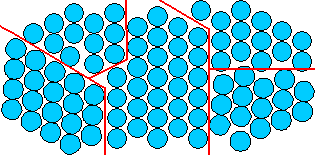
Grain boundaries
A vacancy is a point defect that arises when an atom is 'missing' from the ideal crystal structure.
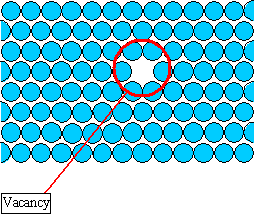
A vacancy
A solute atom in a crystal structure is an atomic species that is different from the majority of atoms that form the structure. Solute atoms of similar size to those in the host lattice may substitute for host atoms - these are known as substitutional solutes. Solute atoms that are much smaller than the host atoms may exist within normally empty regions (interstices) in the host lattice, where they are called interstitial solutes.
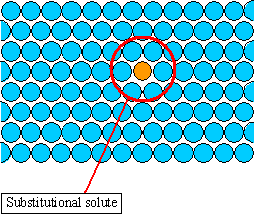
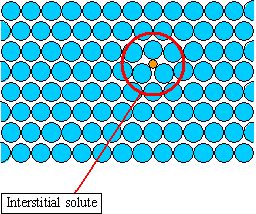
Substitutional and interstitial solutes. Note that some distortion of the host lattice occurs around the solutes.
A dislocation in a 2D close-packed plane can be described as an extra 'half-row' of atoms in the structure. Dislocations can be characterised by the Burgers vector which gives information about the orientation and magnitude of the dislocation.
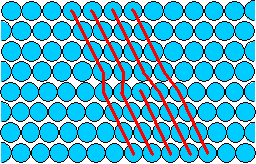
A dislocation

